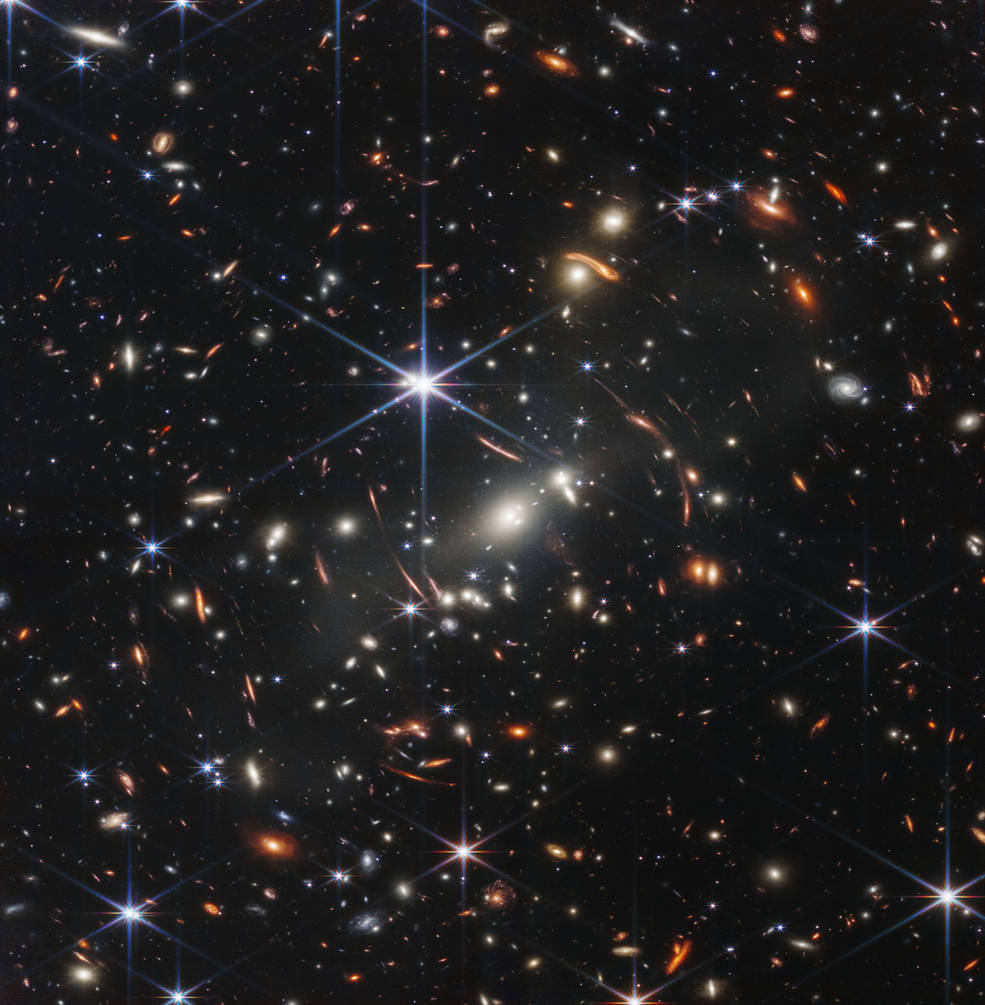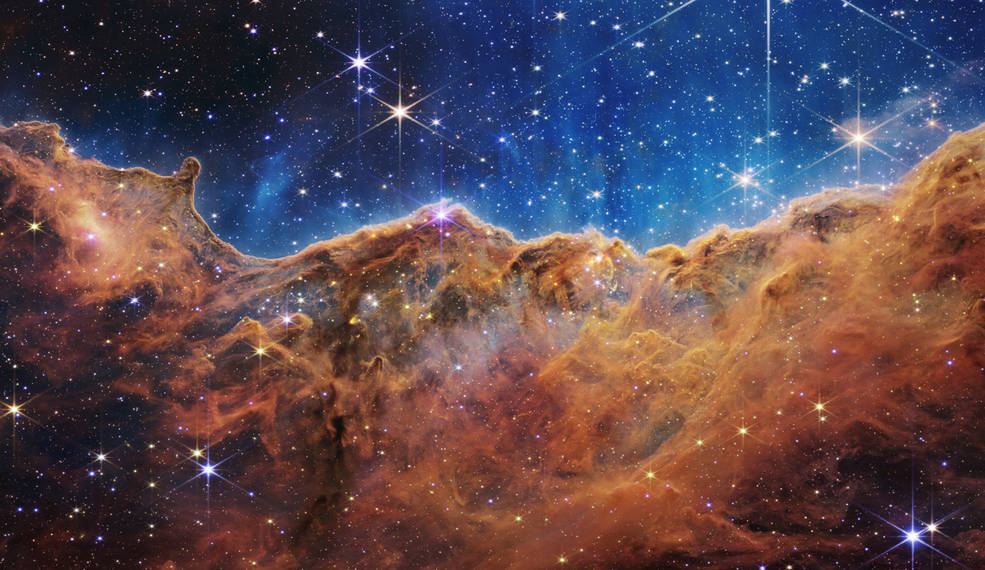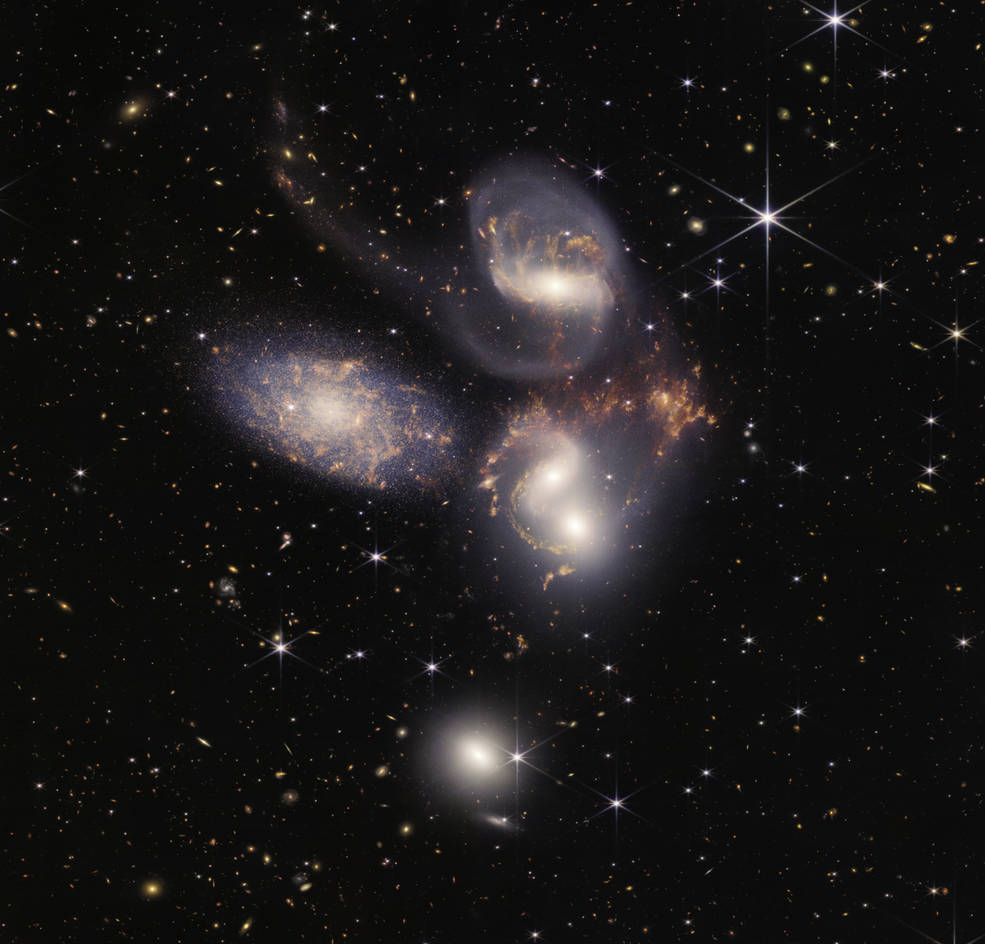First Images from James Webb Space Telescope
August 09, 2022
Ball Aerospace is celebrating with NASA and all of the mission partners, as James Webb Space Telescope shares its first images with the world. We designed and built the advanced optical technology and lightweight mirror system that make these unprecedented images possible.

Webb's First Deep Field (NIRCam Image)

“Cosmic Cliffs” in the Carina Nebula (NIRCam Image)
“It is awe-inspiring to see these images, which are the culmination of more than 20 years of really hard work by thousands of people across multiple companies, government agencies and academic institutions,” said Dr. Makenzie Lystrup, vice president and general manager, Civil Space, Ball Aerospace. “These are just the first of what will be exquisitely-rendered and detailed images that will shed new light on the formation of universe as well as the galaxies and stars within it.”


After launching in December, the James Webb Space Telescope (Webb) took approximately 30 days to reach its orbit near the second Lagrange point (L2) where it captured these images. During its month-long journey it went through the careful processes of deploying the sunshield and mirrors. After Webb’s camera reached its initial operating temperature of 120 Kelvin (approximately -244 degrees Fahrenheit, or -153 degrees Celsius), Webb’s optics team began meticulously moving the 18 primary mirror segments to form a single mirror surface that can capture sharp and detailed images, like those just released.

All images credited to: NASA, ESA, CSA, STScI
Some Fun Facts
- Webb is the largest mirror and the first segmented telescope ever flown in space.
- Webb’s primary mirror is made of 18 separate hexagonal segments.
- The two side wings, each consisting of three mirror segments, were folded to fit inside the rocket and deployed after launch.
- Considered the successor to the Hubble Space Telescope, Webb will be striving to detect the first galaxies in the universe that formed 13.5 billion years ago.
- Webb’s mirrors are passively chilled to -233°C (-388°F) by Ball-built radiators, while a massive umbrella-like shield blocks the Sun’s heat.
- While Webb is lighter than Hubble, it is much larger – approximately as tall as a three-story building and about as long as a tennis court.
People of Webb
Webb was announced in 1996 under its original moniker, the Next Generation Space Telescope. Ball Aerospace was an early mission partner, teaming with Goddard Space Flight Center and TRW (later acquired by Northrop Grumman) in 1997 to conduct technical requirement and cost studies. In 2002, Ball won the contract to design and build the advanced optical technology and lightweight mirror system. Ball shipped the completed mirror system to Goddard Space Flight Center in December 2013 and continued to support NASA throughout integration and testing.
An amazing team of Ball Aerospace engineers, technicians, support staff worked together, and with our mission partners at NASA’s Goddard Space Flight Center and Northrop Grumman, the prime industry contractor, to imagine, design and build the iconic 25 square-meter (~269 square feet) system consisting of 18 beryllium mirror segments working together as one unit. Ball also developed the cryogenic actuators and electronic flight control boxes used to keep the mirror segments properly aligned on orbit.
The video below, originally shared shortly after Webb’s historic launch last December, features just some of the many Ball Aerospace team members who contributed to this “major engineering marvel,” as structural engineer Heather Doty astutely phrased it.
